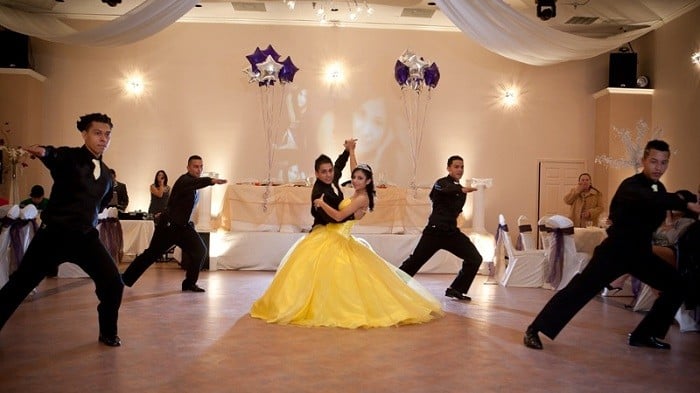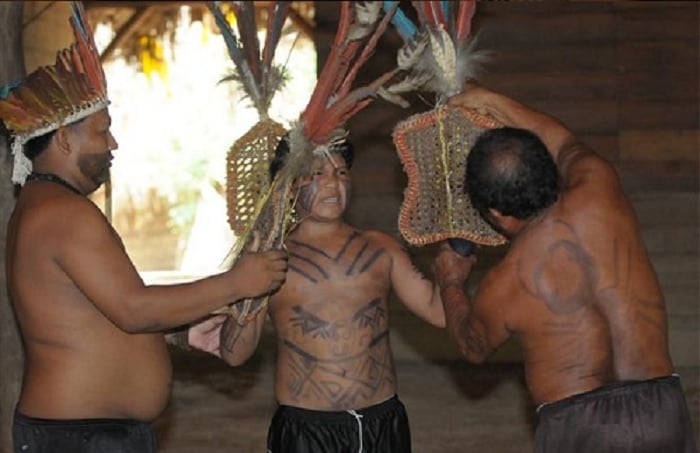
Though coming of age traditions vary drastically from culture to culture, nearly every society designates specific rituals, ceremonies, and traditions as a way to symbolize and celebrate the transition from child to adult. Here are six of the world’s coolest coming of age traditions that mark the wonderful passage from childhood into adulthood.
Jewish Coming Of Age Traditions: The Bar and Bat Mitzvah

Source: David Fox Photographer
The bar mitzvah and bat mitzvah are coming of age ceremonies for Jewish boys and girls, respectively. Under Jewish Law, individuals are only required to formally observe the commandments once they reach a specific age (12 for girls, 13 for boys). While this change occurs automatically once the child reaches that age, a bar or bat mitzvah is often held to celebrate the boy or girl’s coming-of-age and publicly mark the individual’s right to now participate in religious ceremonies, count in the minyan, or form contacts.

Source: The Andrew James
While the ceremony does not indicate that the child is physically an adult, it does so mentally and emotionally with the emphasis on the individual’s increased culpability and responsibility. The name itself “bar” or “bat mitzvah”, translates into son or daughter of the mitzvah, since from that point on the individual much abide by the mitzvahs (also known as commandments or laws) of the Torah.
Like most coming of age traditions, bar and bat mitzvahs lack a singular, definitive template, but most contain an aliyah as well as a reading from the Torah or haftorah by the child obtaining bar or bat mitzvah.
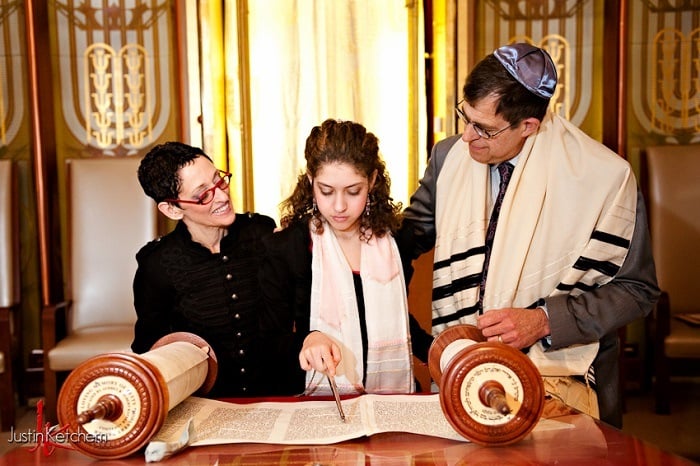

Source: Verite Photo
Much like other coming of age traditions and celebrations, reaching “adulthood” isn’t cheap: the bar or bat mitzvah is often expensive, and requires weeks of preparation and education beforehand. Following the ceremony, a reception often as grand as a wedding follows, in which the individual is celebrated. Family and friends come together to join in the fun.
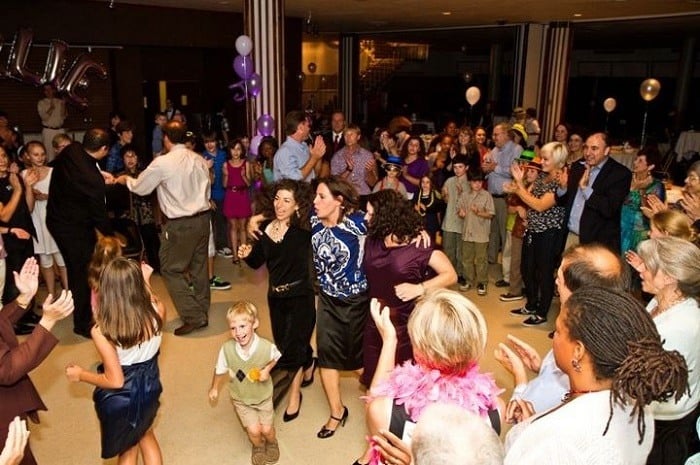
The Sateré-Mawé Coming Of Age Tradition: Bullet Ant Initiation
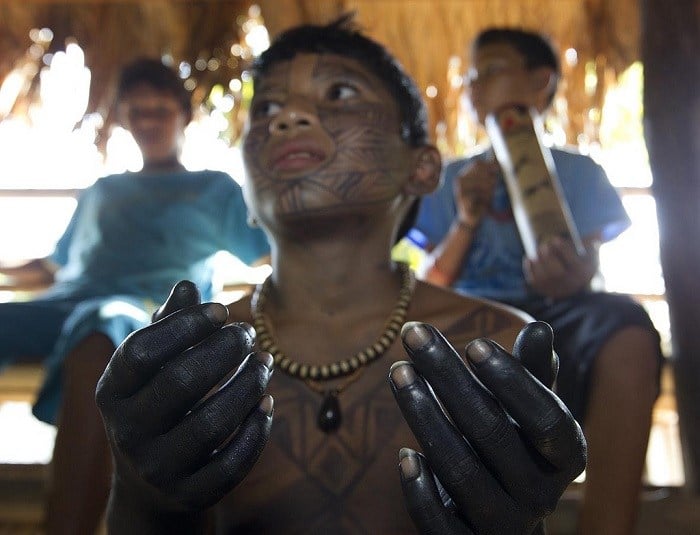
Source: Flickr
The Sateré-Mawé is an indigenous tribe located in the Brazilian Amazon. The tribe has little contact with the outside world, though it has gained some attention over the years–especially the terrifying coming-of-age initiation ceremony that bestows the nickname “Sons of the Guarana” upon the tribal members.
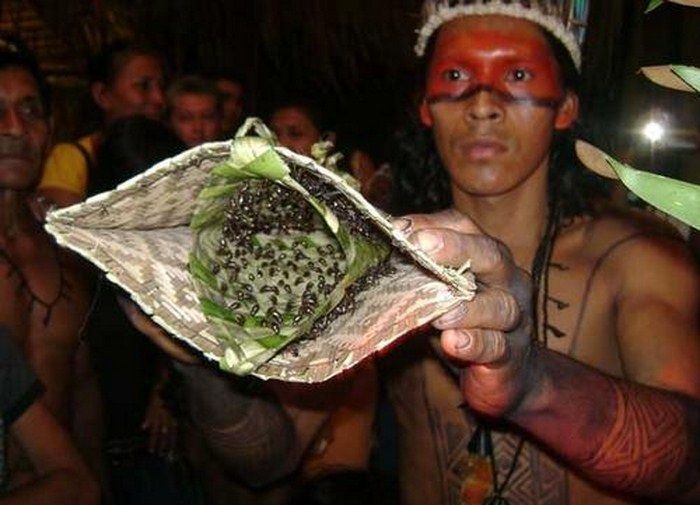
Source: The Drip Tray
When the boys in the Sateré-Mawé tribe turn 13, they enter the jungle to find and harvest bullet ants (around one-inch long) that will be used for the ceremony.
A tribe leader then sedates the ants by submerging them in an herbal solution. Once the ants stop moving, they weave them into “gloves,” with the stingers pointed inward. After an hour or so, the ants wake up angrier than ever, and the initiation tradition begins.
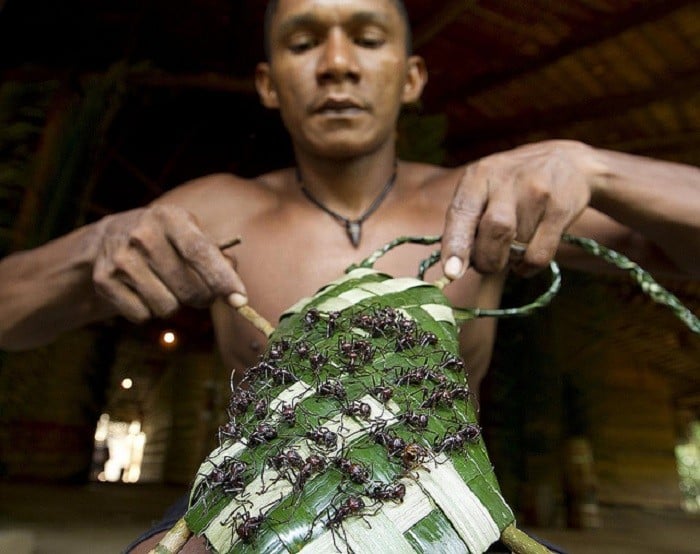
Source: Tumblr
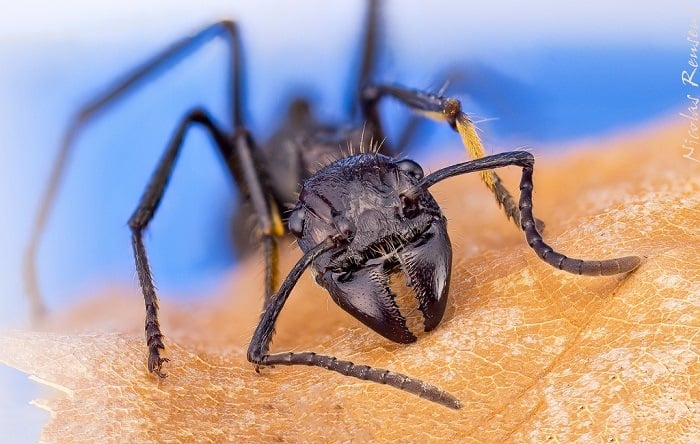
The young boys take 10-minute turns wearing the bullet ant gloves on their hands. Though the pain takes hold of them immediately, few if any of the young boys cry out. According to tribe members, the painful initiation is good preparation for life and proves that each boy will be able to fulfill the duties of manhood. Each boy becomes a man by wearing the gloves 20 times over the course of several months, as manhood in this sense is understood as withstanding pain without crying or showing weakness.
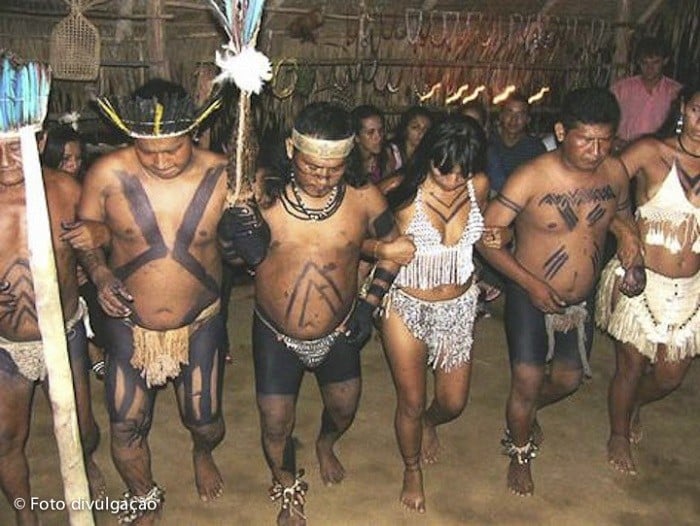
Source: Alfredo Nascimiento
The sting of a bullet ant tops the SSPI (Schmidt Sting Pain Index), a scale that rates the pain caused by different Hymenopteran stings, and is considered 30 times more painful than a bee sting. Many say the pain is similar to that of being shot, hence the name bullet ants. Aside from pain, the venom also causes paralysis and the shakes, and takes a full 24 hours for the toxins to dissipate.
To see the initiation in action, check out this intense National Geographic video:
An American Coming Of Age Tradition: Sweet Sixteen
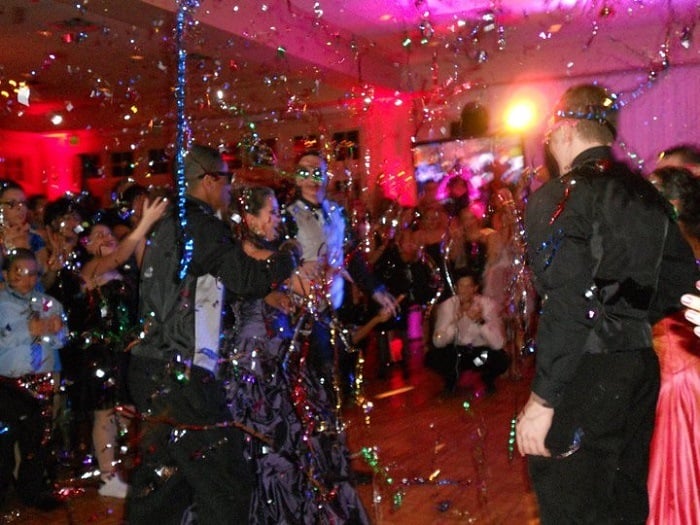
A sweet sixteen party is a coming-of-age tradition that occurs primarily in the United States and Canada. As the name suggests, the celebration takes place on both boys’ and girls’ sixteenth birthdays. While some families throw huge, lavish celebrations, others choose to celebrate the birthday as it were a normal occurrence.

Source: Ebay
Sweet sixteen parties were recently highlighted on a popular American television show titled “My Super Sweet Sixteen”, where reality television crews profiled some of the country’s most lavish and insane sweet sixteen parties, ostensibly celebrating the triumph of consumerism more so than one’s naturally subtler coming-of-age.
While sweet sixteen celebrations lack the religious influence of other coming-of-age celebrations, some traditions do surface. As seen in the television show, children are often given a car during their sweet sixteen party, marking the child’s increased freedom and responsibility.

Source: King Size Bows
Amish Coming Of Age Traditions: Rumspringa

Source: Discovery
For Amish youth, rumspringa, usually translated as “running around,” marks the intermediary time when they finally have unsupervised weekends away from family and are yet to be under the authority of the church.
When Amish teenagers turn 16, they are encouraged to explore the world and experience life with the hope that their venturing out will ultimately drive them back to a commitment with the church. An individual’s rumspringa ends when he or she decides to get baptized and commit his or her life to the church and the Amish community.

While Amish communities adhere to incredibly strict rules, rumspringa is intended to remind the youth that their being in the community and church is voluntary. Though it varies from community to community, rumspringa offers Amish children the chance to experience worldly pleasures, often for the first time. For some this means relatively benign changes such as buying more modern street clothes or purchasing a DVD player, though for others it means little more than performing sexual acts and indulging in drugs or alcohol.
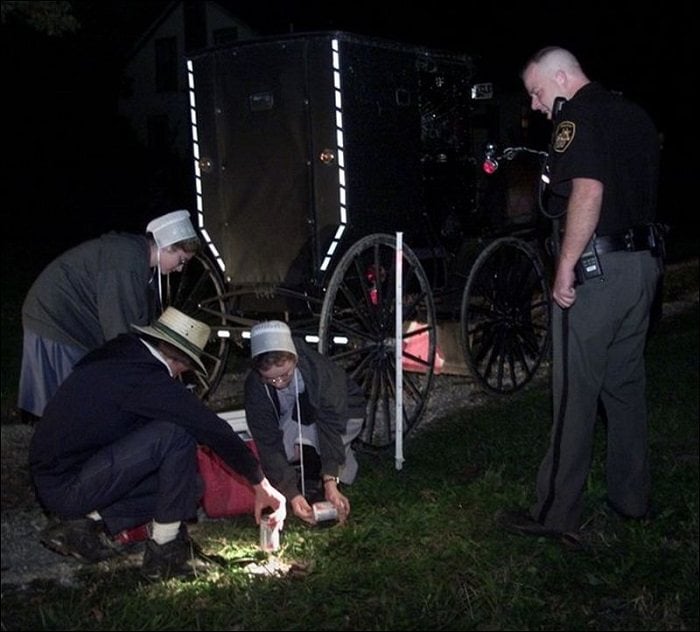
Source: Toledo Blade

Source: Avidly
Teenagers who are new to rumspringa are often called “simmies,” meaning foolish in the head, young, and new. It’s a term that the 16-year-olds hope to shed as quickly as possible. Still, most Amish people continue to live at home, and there are a number who navigate through rumspringa without a hint of wild or rebellious behavior. The Amish can be baptized anytime between the ages of 16 and 25.
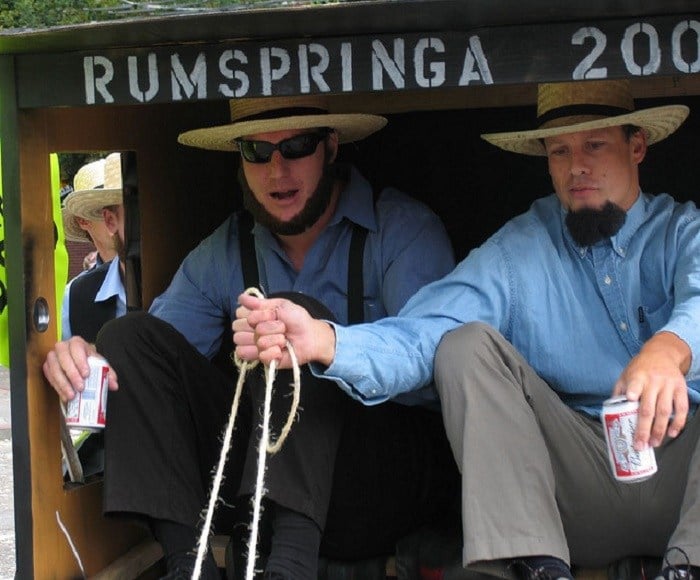
Source: WordPress
The Apache Coming Of Age Tradition: The Sunrise Ceremony
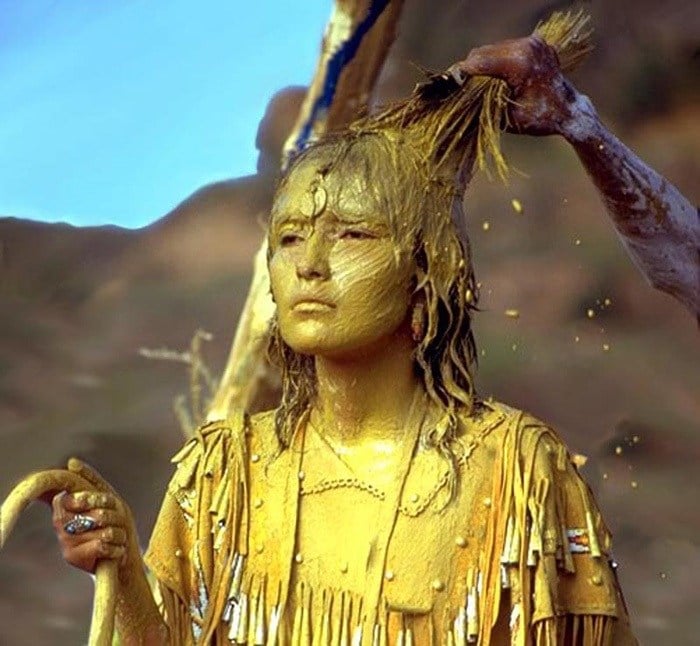
Source: Haunted Garden Book
Though it is now a rarity, traditionally all Apache girls were required to complete the sunrise ceremony, also known as Na’ii’ees or the puberty ceremony, during the summer following their first menstruation. The four-day ceremony is a ritual reenactment of the Apache Origin Myth and through personification draws the female participant closer to the first woman, known as White Painted Woman, Changing Woman or simply Esdzanadehe.
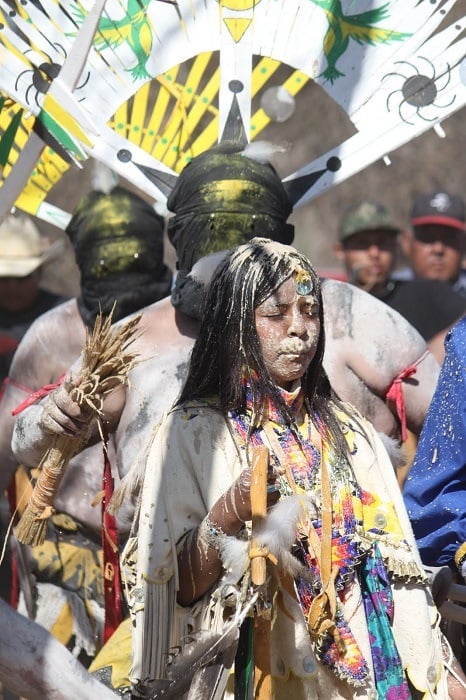
The ceremony itself contains much dancing, singing, ritual, and history. At one point, the participant is even painted with a pollen mixture. During the ceremony, the girl’s power is for herself, though in the four holy days following the ceremony, it becomes available to anyone.
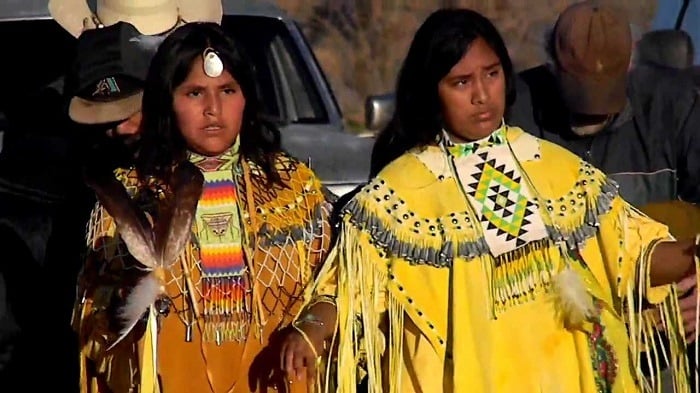
Source: YouTube
Said to have the powers of the White Painted Woman in the four holy days following the ceremony, girls have been known to heal others without touching them, as well as bring rain. During this special time, the girl must abide by certain restrictions: she is unable to wash herself, touch her own skin, or drink from anything other than her drinking tube.
Check out this video of one of the ceremonies:
Due to the expansive preparations involved, the cost of the ceremony is extremely high for parents. They must pay the individuals who mediate the ceremony, for the intricate symbolic clothing, and many other tribal costs.
To reduce the price, some families now do joint ceremonies with other girls coming of age, or they perform a shortened version of the original ceremony. Cost, however, hasn’t been the biggest curb to the practice: United States legislation had effectively banned Native American spiritual practices and rituals for decades before the passage of the American Indian Religious Freedom Act.
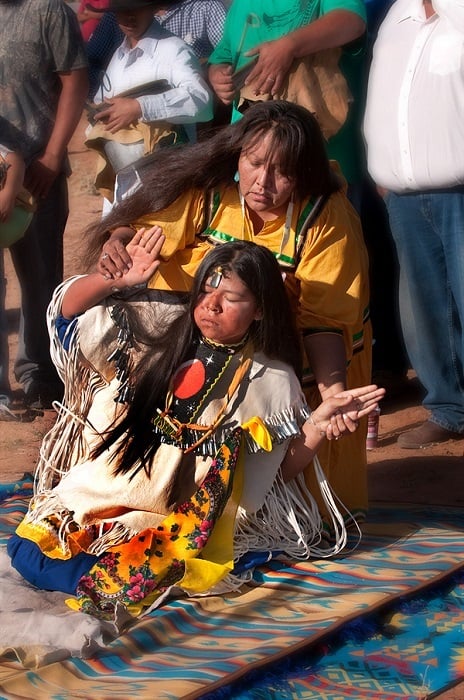
Hispanic Coming Of Age Tradition: The Quinceañera
A quinceañera, also referred to as the “fiesta de quince años” or “quince”, celebrates a Hispanic girl’s journey from childhood to maturity. The quinceañera itself takes place around a girl’s fifteenth birthday (hence the name), and is popular in many Spanish-speaking regions, such as Mexico, Puerto Rico, Cuba, and Central and South America. Though quinceañeras are primarily for women, in recent years some boys have held their own quince celebrations, though such parties usually lack the religious and ceremonial elements.

[caption id="attachment_14609" align="aligncenter" width="700"]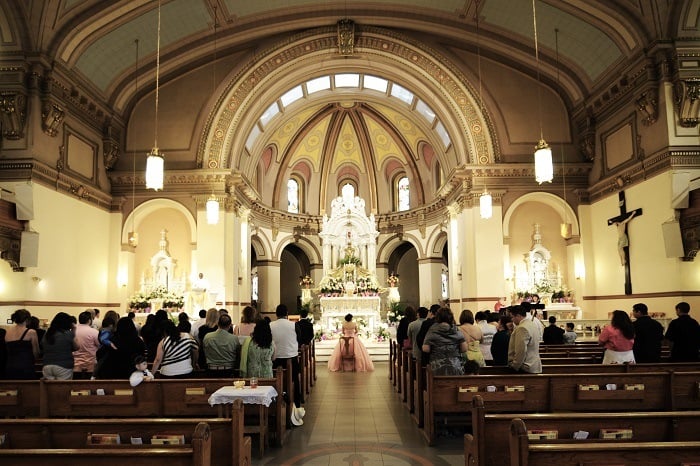 Source: My Perfect Quince
Source: My Perfect Quince
Customarily, the quinceañera begins with a special Mass in which the girl renews her baptismal vows. The ceremony is important, as it solidifies the girl’s commitment to her family and to her faith. Most girls spend months preparing for the ceremony and learning how to “act” as a woman. The religious ceremony is then followed by a grand “fiesta” or reception.
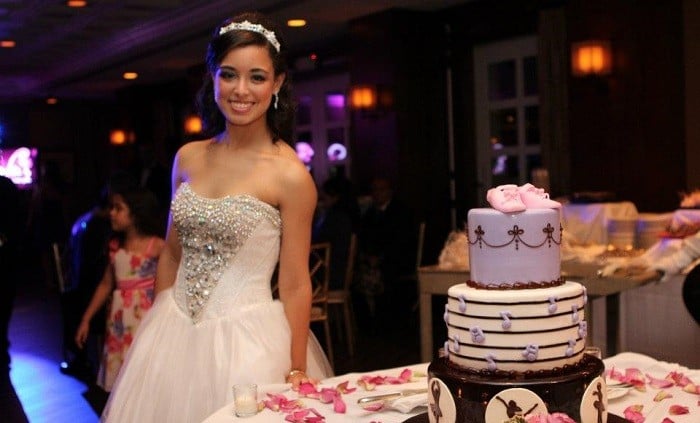
The after-party is an expensive affair, as parents must purchase the extravagant ball gown worn by their daughter, along with a venue, dancing lessons and accommodation for the girls’ court, which consists of seven comples and the chambelán de honor who functions as the girl’s date and holds significance in much of the event’s tradition.
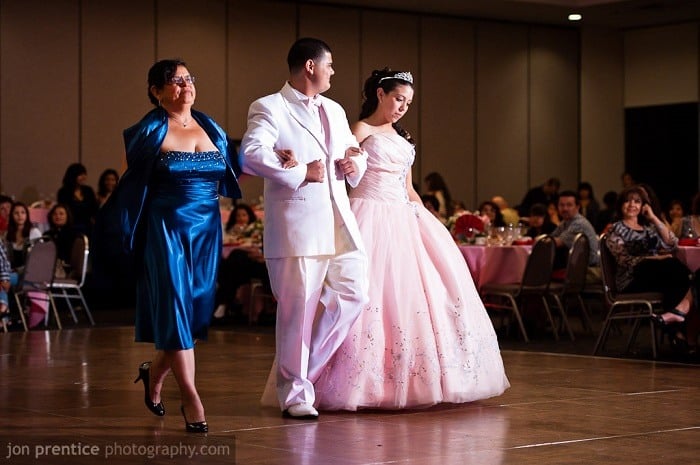
Source: Jon Prentice Photography
While receptions can and do differ significantly, many begin with the girl’s formal entry, followed by a toast from the girl’s parents, and then one from the girl herself.
During the quince reception, the girl will often gift a doll to a younger friend or relative, signaling that it’s time to leave childhood behind. There are also multiple father-daughter traditions, including a father-daughter dance, and a special tradition in which the father removes his daughter’s slippers and replaces them with high-heeled shoes to represent her transformation from girl to woman.
